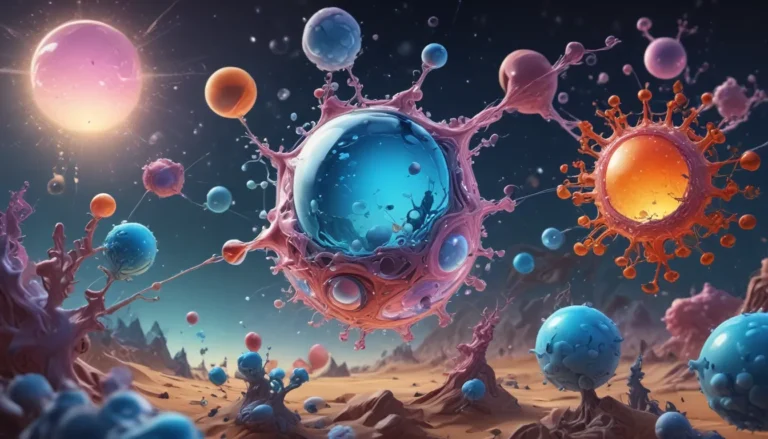A Note About Images: The images used in our articles are for illustration purposes only and may not exactly match the content. They are meant to engage readers, but the text should be relied upon for accurate information.
Do you ever wonder about the temperature at which a solid substance transitions into a liquid state? That’s where the intriguing concept of melting points comes into play. Melting points are not just about science; they have practical applications in various industries like pharmaceuticals, materials science, and chemistry research.
Understanding Melting Points: What You Need to Know
The melting point of a substance is a fundamental property that indicates the temperature at which it changes from a solid to a liquid. It’s a crucial characteristic used to identify and categorize different substances based on their physical states.
Exploring the World of Melting Points
One of the most fascinating aspects of melting points is their variability among different substances. Some compounds boast exceptionally high melting points, while others have surprisingly low ones. This diversity in melting points influences their applications and uses, making it a key factor in the world of materials science.
The Influence of Intermolecular Forces on Melting Points
The strength of intermolecular forces plays a significant role in determining a substance’s melting point. Compounds with strong intermolecular forces, like ionic or covalent compounds, tend to have higher melting points, while those with weaker forces, such as molecular compounds, exhibit lower melting points.
Melting Points and Purity Determination
Melting points are not just about transitions; they can also help determine the purity of a substance. Pure substances exhibit sharp, well-defined melting points, while impurities can cause the melting point to shift or have a broader range. This technique is widely used in chemical analysis and quality control processes.
Allotropic Forms and Their Melting Points
Some substances can exist in different allotropes, meaning they can take on different forms with distinct crystal structures. Each allotrope may have a different melting point, showcasing the versatility and complexity of certain elements like carbon, which can exist as diamond or graphite.
Molecular Weight and Melting Points
In the world of melting points, molecular weight matters. Substances with higher molecular weights tend to have higher melting points due to the increased strength of intermolecular forces with larger molecules. This correlation highlights the importance of molecular structure in determining a substance’s physical properties.
Pressure’s Role in Shifting Melting Points
Pressure isn’t just something you feel; it can also influence the melting point of a substance. Depending on the specific molecular structure, increasing pressure can either raise or lower the melting point. This dynamic relationship between pressure and melting points adds an extra layer of complexity to the study of materials.
The Anomaly of Water’s Melting Point
Water, the basis of life, exhibits a unique behavior when it comes to melting points. Unlike most substances, the melting point of water decreases as pressure increases, thanks to the intricate hydrogen bonding network present in solid ice. This anomaly sets water apart from other compounds and highlights its exceptional properties.
Exploring Melting Points Through Phase Diagrams
Phase diagrams offer a visual representation of how temperature, pressure, and the different phases of a substance interact. The melting point is a crucial point on the phase diagram, allowing scientists to study how substances behave under varying conditions and pressures.
Applications in Materials Science and Engineering
The knowledge of melting points is indispensable in materials science and engineering. It guides the selection of suitable materials for specific applications, whether it’s choosing metals with high melting points for high-temperature environments or opting for low-melting-point polymers for molding processes.
In conclusion, melting points are more than just numbers on a thermometer; they provide valuable insights into the physical properties and behavior of substances. By understanding the factors that influence melting points, scientists and engineers can make informed decisions in various scientific fields and industries.
Explore the Wonders of Melting Points
As you delve into the captivating world of melting points, consider the vast implications they have on our understanding of materials science and engineering. If tantalum, a versatile metal with applications in electronics and medical devices, piques your interest, why not explore more intriguing facts about this remarkable element? Expand your knowledge of the physical world around us and uncover the mysteries that melting points hold.
Have any questions about melting points?
FAQs
Q: What is melting point?
A: The melting point is the temperature at which a solid substance transitions into a liquid state, as its particles gain enough energy to break free from their fixed positions.
Q: Why is melting point important?
A: Melting point is crucial for identifying substances, determining purity, and understanding behavior under different conditions.
Q: How is melting point determined?
A: Melting point is determined by heating a solid substance slowly and observing the temperature at which it turns into a liquid.
Q: What factors affect melting points?
A: Impurities, pressure, and molecular structure can all influence the melting point of a substance.
Q: Can melting point be used for identification?
A: Yes, melting point is a common method used in chemistry labs to identify unknown substances.
We are dedicated to providing trustworthy and engaging content that fuels your curiosity and expands your knowledge. Each fact on our site is contributed by real users like you, ensuring a wealth of diverse insights and information. Our editors meticulously review every submission to uphold the highest standards of accuracy and reliability. Trust in our commitment to quality and authenticity as you embark on your journey of exploration and learning with us.






